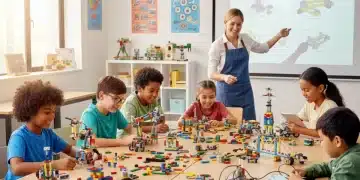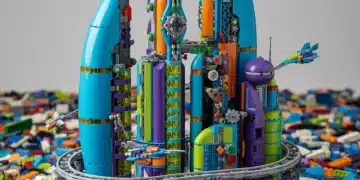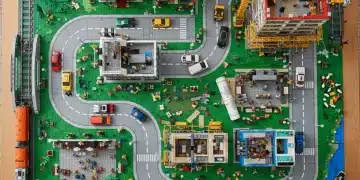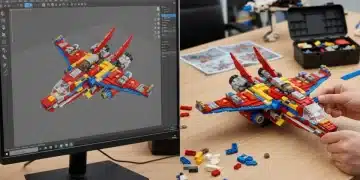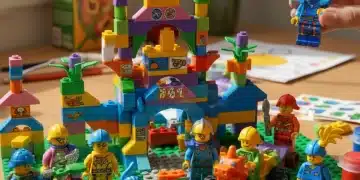Lego Robotics with Boost: A Beginner’s Programming Guide
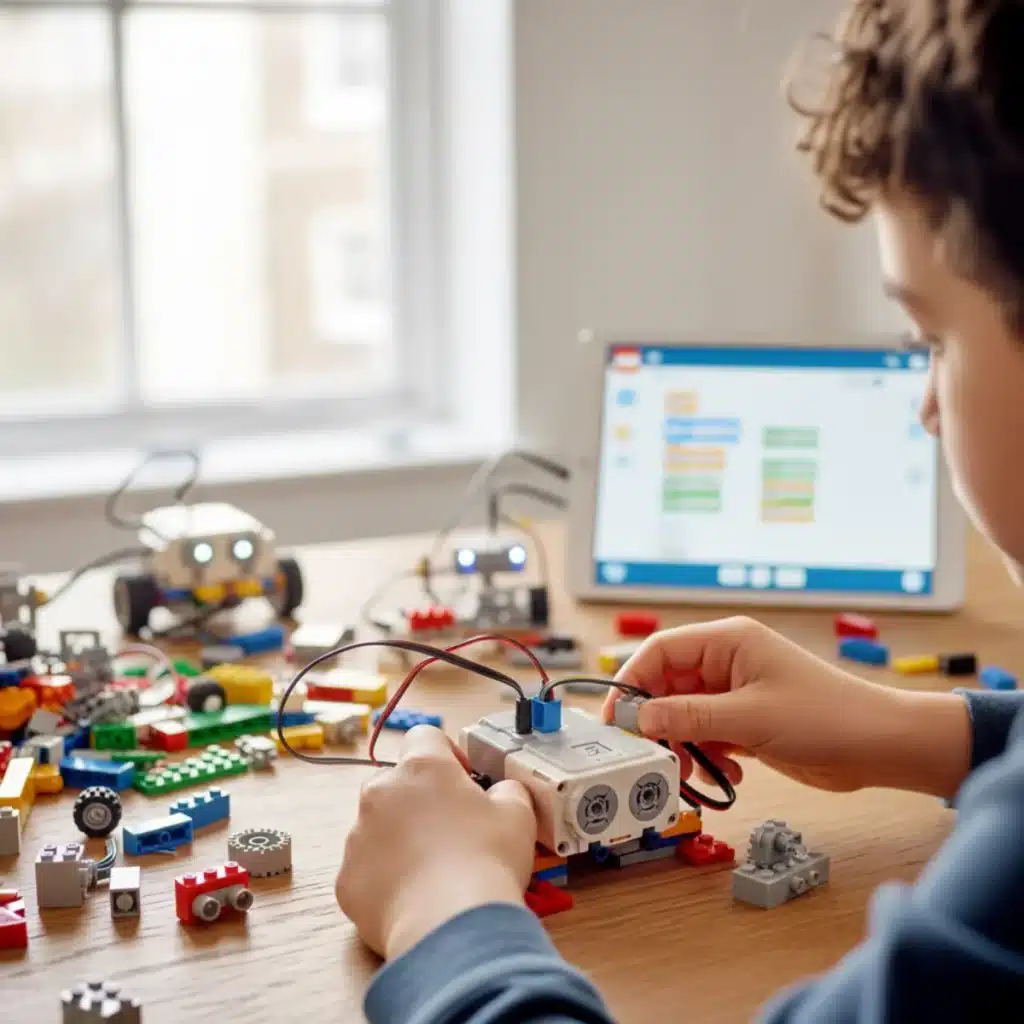
Advertisements
Lego Robotics with Boost: A Beginner’s Guide to Programming introduces children to fundamental robotics and coding concepts through engaging, hands-on activities, transforming complex ideas into accessible, playful learning experiences.
Have you ever wondered how to bring your Lego creations to life, making them move, respond, and even interact with their surroundings? The world of robotics might seem complex, but with Lego Robotics with Boost: A Beginner’s Guide to Programming, it becomes an exciting adventure accessible to everyone, especially young builders and aspiring coders. This guide will take you step-by-step through the magic of combining physical building with digital programming, transforming static bricks into dynamic, intelligent machines.
Anúncios
Understanding the Lego Boost System
The Lego Boost Creative Toolbox is more than just a toy; it is a gateway to the fascinating world of robotics and coding. Designed to be intuitive and engaging, Boost allows children and beginners of all ages to build five different multi-functional models, each with unique capabilities. This system bridges the gap between traditional Lego building and the advanced concepts of STEM (Science, Technology, Engineering, and Mathematics).
At its core, the Boost system consists of three key electronic components: the Move Hub, the Color & Distance Sensor, and the Interactive Motor. These components are the brains and senses of your Lego robots, enabling them to perform actions, detect objects, and react to their environment. Learning how these pieces work together is the first step in unlocking the full potential of your robotic creations.
Anúncios
The Core Components of Boost
Each electronic part plays a crucial role in the functionality of your Lego Boost models. Understanding their individual functions is essential for effective programming and creative building.
- Move Hub: This is the central processing unit of your Boost robot. It houses two encoded motors, a tilt sensor, and a Bluetooth Low Energy (BLE) connection to communicate with your device. It also powers the other components.
- Color & Distance Sensor: This versatile sensor allows your robot to detect colors and measure the distance to objects. It’s vital for navigation, object interaction, and creating responsive behaviors.
- Interactive Motor: An additional motor that provides precise movement and rotation. It can be used for various mechanical functions, such as operating gears, levers, or wheels, adding more complexity to your builds.
These components are seamlessly integrated with standard Lego bricks, allowing for endless creative possibilities. The beauty of Boost lies in its ability to make complex robotics concepts tangible and fun, encouraging experimentation and problem-solving. By starting with the basics of these components, you lay a solid foundation for more advanced projects.
In essence, the Lego Boost system demystifies robotics by providing a playful and accessible platform. It encourages users to think like engineers and programmers, fostering critical skills that are increasingly important in our technological world. Getting to know each part and its role is the first exciting step on your journey into Lego robotics.
Getting Started: Building Your First Boost Robot
Embarking on your first Lego Boost build is an exhilarating experience that combines the joy of traditional Lego construction with the excitement of bringing your creation to life. The Creative Toolbox comes with instructions for five main models, each designed to introduce different aspects of robotics and programming. Vernie the Robot is often the first and most iconic build, offering a comprehensive introduction to the system’s capabilities.
The building process itself is guided by the Lego Boost app, which provides interactive 3D instructions. Unlike traditional paper manuals, this digital approach allows you to rotate the model, zoom in on specific steps, and even test components as you build. This interactive guidance makes the construction process smooth and engaging, ensuring that even complex steps are easy to follow for beginners.
Step-by-Step Construction with Vernie
Building Vernie is not just about snapping bricks together; it’s about understanding how mechanical parts connect to electronic components to create a functional robot. The app breaks down the build into manageable sections, often interspersed with short programming challenges to test newly added features.
- Follow the App Instructions: The Lego Boost app is your best friend during construction. Pay close attention to the 3D models and step-by-step animations. They highlight exactly where each brick goes.
- Connect Electronic Components Early: The app will prompt you to connect the Move Hub, sensors, and motors at specific points. Ensure these connections are secure, as loose connections can lead to malfunctions.
- Test as You Go: After certain building stages, the app provides mini-programming tasks. These are designed to help you understand how the parts you just assembled work, like making Vernie’s head turn or its wheels move.
The satisfaction of seeing your creation take shape, piece by piece, is immense. Each completed section brings you closer to a fully functional robot. This hands-on process reinforces spatial reasoning and fine motor skills, crucial for young builders. It also teaches patience and problem-solving, as sometimes a small error can halt progress.
Once Vernie is fully assembled, the real fun begins. You’ll have a robot ready to be programmed, capable of moving, talking, and interacting. This initial building experience sets the stage for a deeper exploration into the world of robotics and coding, making abstract concepts concrete and exciting.
Introduction to Boost Programming
Programming with Lego Boost is an incredibly intuitive and visual experience, designed specifically for beginners. The Boost app uses a drag-and-drop coding interface, similar to Scratch, which eliminates complex syntax and focuses on logical thinking. This block-based programming approach makes coding accessible and enjoyable, allowing users to create intricate sequences of actions with ease.
The app’s interface is colorful and engaging, presenting different types of code blocks that represent various commands. These blocks can be snapped together like Lego bricks, forming a sequence of instructions that your robot will follow. This visual metaphor makes the transition from physical building to digital programming feel natural and seamless.
Exploring the Boost Coding Blocks
The programming environment in the Boost app offers a wide array of blocks, each with a specific function. Understanding these categories helps in crafting more sophisticated programs for your robots.
- Movement Blocks: Control the motors to make your robot move forward, backward, turn, or spin. You can specify speed, direction, and duration.
- Action Blocks: Trigger specific actions like playing sounds, changing light colors on the Move Hub, or controlling the Interactive Motor for custom movements.
- Sensor Blocks: Allow your robot to react to its environment. These blocks can detect colors, measure distances, or respond to tilts and shakes from the Move Hub’s internal sensor.
- Control Flow Blocks: Introduce logic into your programs, enabling loops (repeating actions), conditional statements (if-then scenarios), and waiting for specific events.
Combining these blocks allows for incredible creativity. For instance, you could program Vernie to move forward until it detects a red object, then turn around and say “Oops!” The visual nature of the programming blocks makes it easy to see the flow of your program and debug any issues, fostering a strong foundation in computational thinking.
Starting with simple sequences and gradually increasing complexity is the best way to learn. The Boost app includes guided activities and challenges that incrementally introduce new programming concepts, ensuring a gentle learning curve. This hands-on programming experience is not just about making a robot move; it’s about developing problem-solving skills, logical reasoning, and a passion for technology.
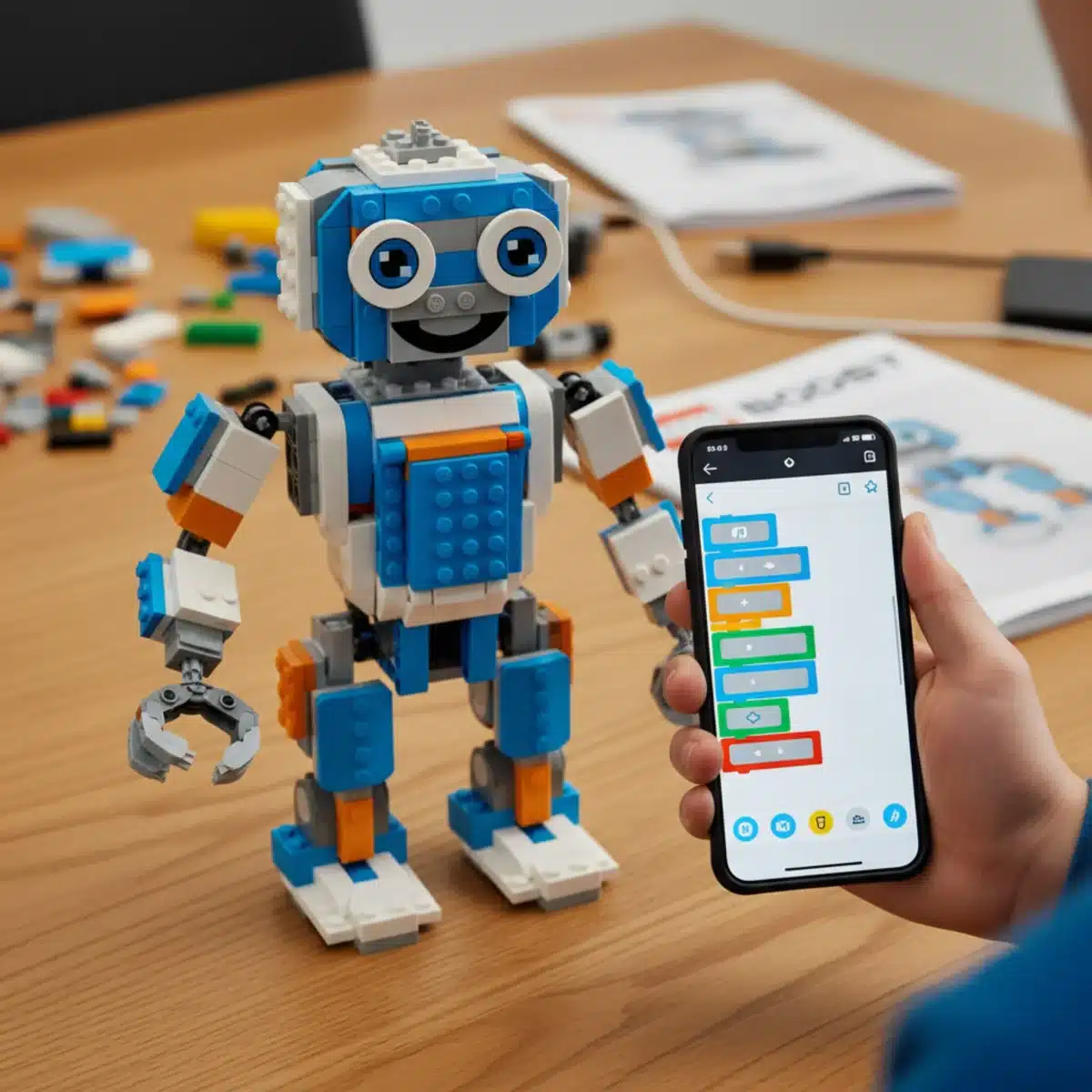
Advanced Programming Techniques and Customization
Once you’ve mastered the basics of building and programming with Lego Boost, the next step is to explore more advanced techniques and unleash your creativity through customization. The Boost system, while designed for beginners, offers enough depth to allow for complex projects and personalized robotic companions. This involves moving beyond the pre-designed activities and experimenting with your own ideas.
One of the most exciting aspects of advanced Boost programming is combining different types of blocks in innovative ways. This allows for the creation of robots that exhibit more sophisticated behaviors, react intelligently to their surroundings, and even interact with users in dynamic ways. It’s where the line between following instructions and inventing truly blurs.
Unlocking Creative Potential
Customization is not limited to just programming; it extends to the physical design of your robots. While the Boost Creative Toolbox provides instructions for specific models, the true power of Lego lies in its modularity. You can modify existing models or design entirely new ones from scratch, integrating the Boost electronic components into your unique creations.
- Modifying Official Builds: Experiment with changing parts of Vernie or other official models. Add extra arms, different types of wheels, or even modify their appearance to reflect your own style.
- Designing Original Robots: Use your collection of regular Lego bricks to build entirely new robots around the Move Hub, sensors, and motors. Think about what you want your robot to do and design its physical structure accordingly.
- Complex Sensor Interactions: Program your robot to respond to multiple sensor inputs simultaneously. For example, a robot that stops at a red line and then turns left if it detects an object within a certain distance.
These advanced techniques foster a deeper understanding of engineering principles, such as gear ratios, structural stability, and mechanical advantage. They also push the boundaries of your programming skills, encouraging you to think algorithmically and troubleshoot complex code sequences. The ability to customize both the hardware and software of your Boost robots makes the learning experience incredibly rich and rewarding, turning abstract concepts into tangible, interactive realities.
The journey from a beginner to an advanced Boost user is marked by continuous experimentation and a willingness to explore. There are no right or wrong answers, only different solutions to design and programming challenges. This open-ended approach is what makes Lego Boost such a powerful tool for fostering innovation and critical thinking.
Integrating Boost with Other Lego Systems
The versatility of Lego Boost extends beyond its own toolbox, offering exciting possibilities for integration with other Lego systems. This interoperability significantly expands the creative potential, allowing builders to combine the electronic intelligence of Boost with the vast array of bricks and themes from other Lego lines, such as Lego City, Lego Friends, or even Lego Technic. This creates hybrid models that are both mechanically complex and digitally interactive.
Imagine a Lego City train that you can program to stop at certain stations using a Boost color sensor, or a Lego Friends house with automated doors controlled by a Boost motor. These integrations open up new avenues for imaginative play and advanced engineering challenges, pushing the boundaries of what’s possible with your Lego collection.
Cross-System Compatibility
The key to integrating Boost with other Lego sets lies in understanding the universal nature of Lego’s interlocking brick system. The Boost components are designed to fit seamlessly with standard Lego studs and Technic pins, making them highly adaptable.
- Lego Technic: Technic sets, with their focus on gears, axles, and complex mechanisms, are ideal partners for Boost. You can use Boost motors to power Technic vehicles or create automated functions in intricate Technic models.
- Lego City/Friends: Boost sensors can add interactive elements to cityscapes or dollhouses. A motion sensor could trigger lights, or a distance sensor could activate a moving part in a building.
- Mindstorms Connection: While Boost is a simpler system than Lego Mindstorms, some builders enjoy using Boost components as additional interactive elements in larger Mindstorms projects, though direct software integration can be more challenging.
Integrating Boost with other Lego systems often requires a bit of clever engineering and problem-solving. You might need to design custom frames or mounts to securely attach Boost components to non-Boost models. This process itself is a valuable learning experience, encouraging creative thinking and practical application of design principles. It teaches children how to adapt and innovate, using existing resources to achieve new goals.
By combining the programmable intelligence of Boost with the limitless building potential of other Lego sets, you can create truly unique and dynamic models. This approach not only enhances the play experience but also reinforces the interconnectedness of different engineering and design disciplines, fostering a holistic understanding of how systems work together.
Troubleshooting and Problem-Solving Tips
Even the most seasoned robot builders encounter challenges. When working with Lego Boost, issues can arise from various sources, including building errors, programming glitches, or connectivity problems. Developing strong troubleshooting skills is an invaluable part of the learning process, teaching patience, logical deduction, and resilience. Instead of getting frustrated, view these challenges as opportunities to deepen your understanding of how your robot works.
Most problems with Lego Boost can be resolved by systematically checking common culprits. The key is to approach troubleshooting with a methodical mindset, testing one variable at a time until the source of the issue is identified. This process mirrors real-world engineering and programming practices.
Common Issues and Solutions
Here are some of the most frequent problems encountered by Boost users and practical steps to resolve them:
- Connectivity Issues: If your Move Hub isn’t connecting to the app, first ensure Bluetooth is enabled on your device and the Move Hub batteries are charged. Try restarting both the app and the Move Hub.
- Robot Not Responding: Check all physical connections between the Move Hub, motors, and sensors. A loose wire can prevent a component from functioning. Also, review your program for any logical errors or missing blocks.
- Unexpected Behavior: If your robot isn’t doing what you expect, meticulously review your code block by block. Often, a swapped parameter (like direction or speed) or an incorrect sensor threshold is the cause.
- Building Errors: Sometimes, a misplaced brick or an incorrect gear assembly can hinder movement. Revisit the 3D building instructions in the app, paying close attention to critical mechanical junctions.
Don’t be afraid to take things apart and rebuild them if necessary. Often, a fresh look at the construction can reveal a subtle error. The Boost app also provides some diagnostic tools, such as battery level indicators and component status checks, which can be helpful in pinpointing issues. Remember, every problem solved is a step forward in your journey as a roboticist and programmer, building confidence and expertise.
Troubleshooting is an integral part of the STEM learning experience. It teaches critical thinking and reinforces the idea that mistakes are not failures but opportunities for learning and improvement. By embracing these challenges, you’ll not only fix your robot but also gain a deeper, more robust understanding of its operation.
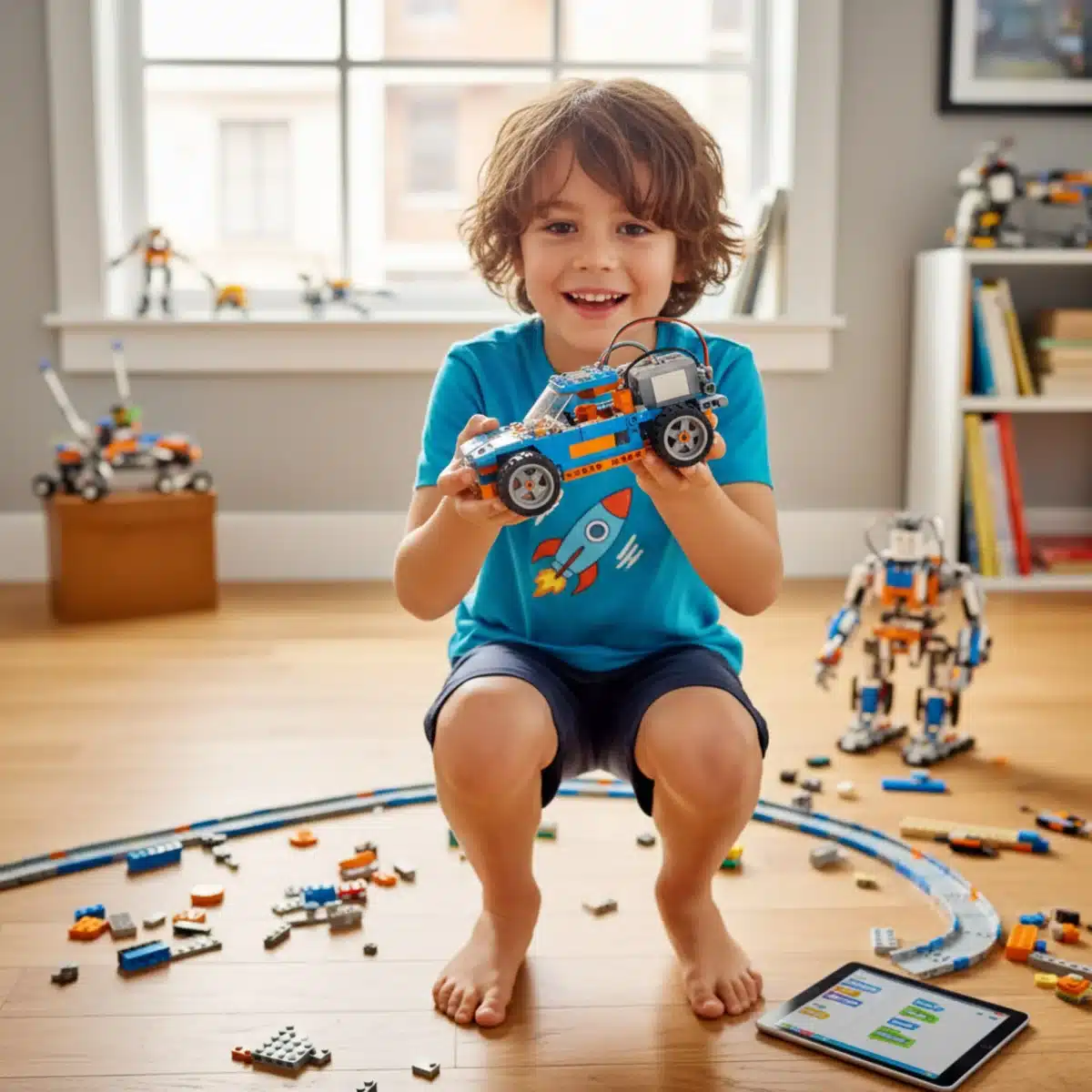
The Educational Value of Lego Boost Robotics
Beyond the sheer fun and entertainment, Lego Boost Robotics offers profound educational benefits, making it an invaluable tool for STEM education. It provides a hands-on, playful entry point into complex subjects like engineering, coding, and problem-solving, fostering skills that are crucial in the 21st century. For children, it’s not just about building a toy; it’s about building understanding and confidence in technological concepts.
The tactile nature of Lego combined with the interactive element of programming creates a unique learning environment. Children learn by doing, experimenting, and observing the direct consequences of their actions. This experiential learning is far more effective than abstract instruction, making complex ideas tangible and relatable.
Key Skills Developed Through Boost
Engaging with Lego Boost helps children develop a wide range of cognitive and practical skills, preparing them for future academic and career paths.
- Computational Thinking: Children learn to break down problems into smaller steps, recognize patterns, think algorithmically, and debug code, which are core components of computational thinking.
- Engineering Principles: Through building, they gain an intuitive understanding of mechanical principles like gears, levers, balance, and structural integrity.
- Problem-Solving: Encountering and overcoming building or programming challenges hones their problem-solving abilities, teaching them to analyze situations and devise solutions.
- Creativity and Innovation: The open-ended nature of Lego encourages imaginative design and allows children to express their ideas through robotics.
- Patience and Persistence: Building and programming robots often requires trial and error, teaching valuable lessons in patience and the importance of not giving up when faced with difficulties.
Lego Boost also promotes collaboration when children work together on projects, sharing ideas and dividing tasks. It provides a safe space for experimentation where failure is seen as a stepping stone to success, encouraging a growth mindset. In a world increasingly driven by technology, providing children with early exposure to robotics and programming in an engaging way is more important than ever.
Ultimately, Lego Boost Robotics is more than just a STEM toy; it’s a powerful educational platform that inspires curiosity, fosters critical thinking, and equips the next generation with the skills they need to innovate and shape the future. It demonstrates that learning can be incredibly fun and that even complex subjects can be approached with a playful spirit.
| Key Aspect | Brief Description |
|---|---|
| Boost System Components | Move Hub, Color & Distance Sensor, and Interactive Motor form the core electronic parts. |
| Drag-and-Drop Programming | Visual, block-based coding interface in the Boost app simplifies programming for beginners. |
| Creative Building & Customization | Users can build official models or design custom robots, integrating Boost parts with other Lego bricks. |
| Educational Benefits | Fosters computational thinking, engineering principles, problem-solving, and creativity in STEM. |
Frequently Asked Questions About Lego Boost Robotics
Lego Boost is a robotics and coding system designed for children aged 7-12, though suitable for any beginner. It combines traditional Lego building with programmable electronic components, allowing users to create interactive robots and learn basic coding concepts through a fun, hands-on experience.
No prior coding experience is required. Lego Boost uses a visual, drag-and-drop programming interface, similar to Scratch, which is highly intuitive for beginners. The app provides guided activities that introduce coding concepts gradually and engagingly, making it easy to learn.
The Creative Toolbox includes instructions for building five main multi-functional models: Vernie the Robot, Frankie the Cat, the Guitar4000, the Multi-Tool Rover 4 (M.T.R.4), and an AutoBuilder. Each model showcases different aspects of robotics and programming, encouraging diverse builds.
Yes, Boost components are fully compatible with other Lego bricks, including Lego City, Friends, and Technic sets. This allows for extensive customization and the creation of unique hybrid models, combining Boost’s interactive features with the vast building possibilities of your existing Lego collection.
Lego Boost fosters computational thinking, engineering principles, problem-solving, and creativity. It provides a hands-on introduction to STEM concepts, developing critical skills like logical reasoning, spatial awareness, and persistence through engaging, interactive play, preparing children for a technology-driven future.
Conclusion
The journey into Lego Robotics with Boost: A Beginner’s Guide to Programming is an incredibly rewarding experience that transcends simple play. It offers a unique blend of physical construction and digital programming, making complex STEM concepts accessible and enjoyable for young minds and beginners. From the initial thrill of assembling your first robot to the satisfaction of seeing your code bring it to life, Boost provides a comprehensive platform for learning and creativity. It’s more than just a toy; it’s a powerful educational tool that nurtures computational thinking, problem-solving skills, and a lifelong passion for technology and innovation. By engaging with Lego Boost, you’re not just building robots; you’re building a foundation for future success in an increasingly technological world, one brick and one line of code at a time.

